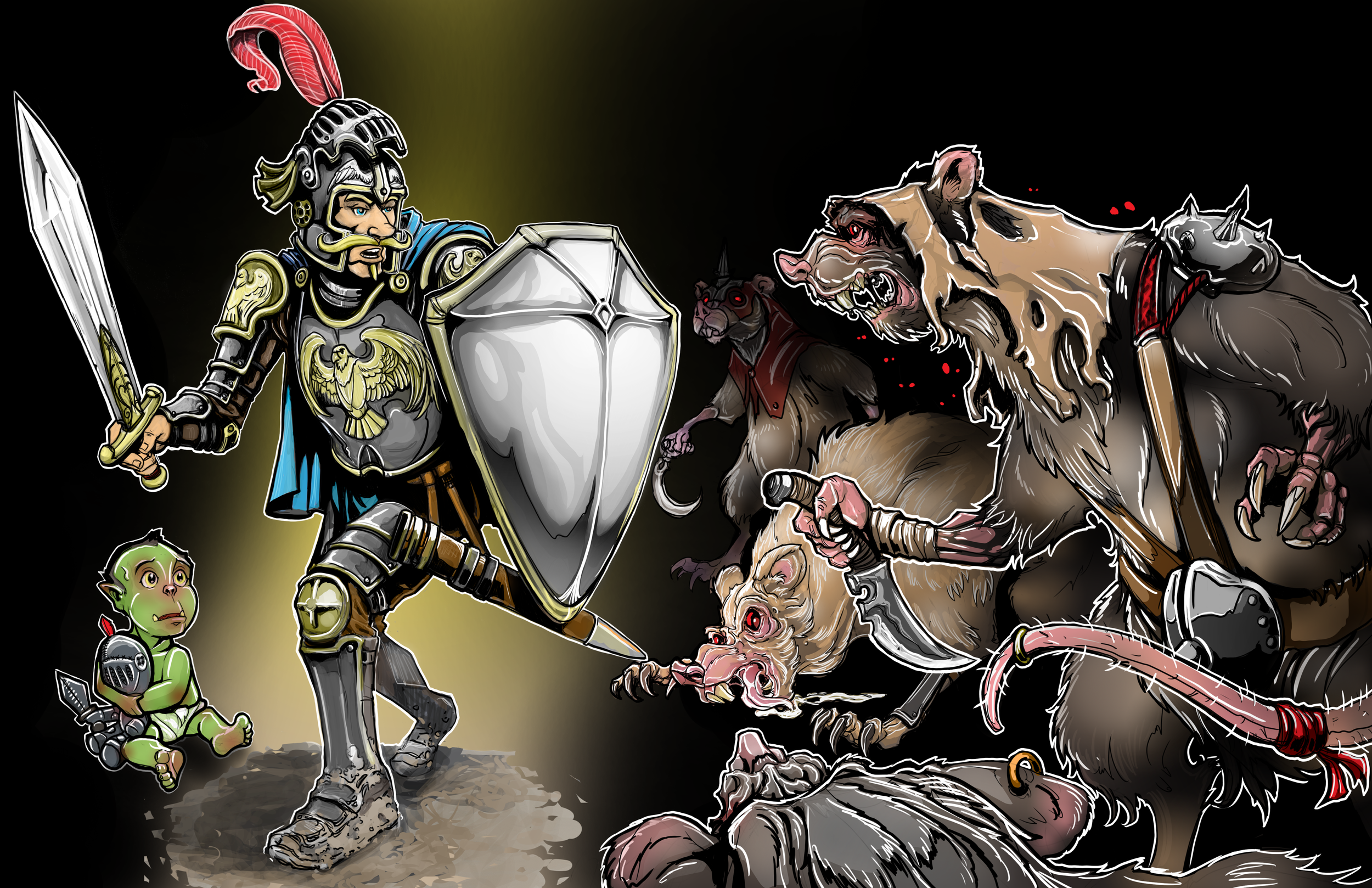Interception 5e
When a creature you can see hits a target, other than you, within 5 feet of you with an attack, you can use your reaction to reduce the damage the target takes by 1d10 + your proficiency bonus (to a minimum of 0 damage). You must be wielding a shield or a simple or martial weapon to use this reaction.
Interception 5e: Fighting Style Review
Review by Sam West, Twitter: @CrierKobold
Paladins and fighters can both take the Interception Fighting Style. Of all the new styles introduced in Tasha’s Cauldron of Everything, Interception is exactly what I wanted to see, and has had the best overall impact on leading to low tier collaborative play patterns while satisfying the protector archetype. Interception is one of the generically useful fighting styles, and goes easily and effectively on any character with one or more other melee allies. It doesn’t scale particularly well, as it's only getting an extra point of reduced damage with your growing proficiency bonus. In the low tiers, though, when 1d10+2 is more damage than the majority of attacks deal, Interception can give you a swath of potential to keep allies alive in a way that uses an otherwise empty reaction slot.
Interception tends to lead to enemies prioritizing the fighter or paladin with it on them, as it disables their ability to block damage on allies. This acts as a better “taunt” mechanic than even options like Compelled Duel, and will lead to enemies feeling like they learn and adapt to fights as they unfold. The first couple of attacks the goblin bandits throw at the monk, who clearly is wearing less armor, will lead to them wasting precious actions as their damage is soaked up by defending paladin. In order for them to win, they either have to accept a huge damage drop every round, or focus the high AC tank next to the endless flurry of fists breaking them swiftly. It's a lose-lose for them, which is a win for you.
The main competition with this is Protection, which is a bit better in the upper tiers simply by sheer force of potential mitigated, but far worse in the lower tiers. Protection has to be used before any dice are rolled, before knowing if an attack was going to hit in the first place. Some uses of Protection will be wasted by simply seeing that both rolls would have missed. Interception doesn’t have this inefficiency. You only use it when an ally is taking damage. It mitigates all of the damage early, and a good amount of it later. When the difference between a hit or miss is 20+ damage, you’ll start wanting better tools to mitigate all the damage, which Protection allows for. If you like the defender archetype, the bulwark against darkness keeping their allies alive while smashing things over the head with a mace, taking Interception early will deliver on that fantasy in spades, and swapping over at 8th or 12th level with Martial Versatility to Protection will probably be a positive direction to move in.
Interception is a real, powerful payoff for a defender character. It's a useful, constantly reusable reaction that shuts down low tier enemies' damage in its entirety. It doesn’t care if the attack is melee or ranged; if your friend is next to you and getting damaged by some attack, you can help. I can’t recommend it enough at tables with two or three front line fighting characters.
Thank you for visiting!
If you’d like to support this ongoing project, you can do so by buying my books, getting some sweet C&C merch, or joining my Patreon.
The text on this page is Open Game Content, and is licensed for public use under the terms of the Open Game License v1.0a.
‘d20 System’ and the ‘d20 System’ logo are trademarks of Wizards of the Coast, Inc.
and are used according to the terms of the d20 System License version 6.0.
A copy of this License can be found at www.wizards.com/d20.



